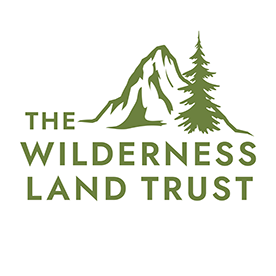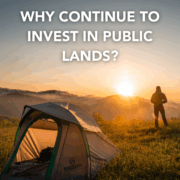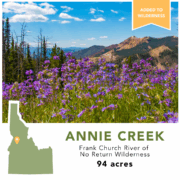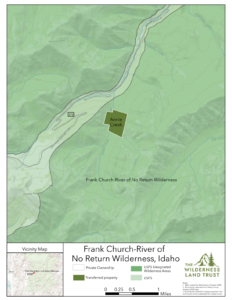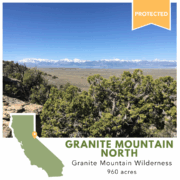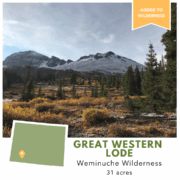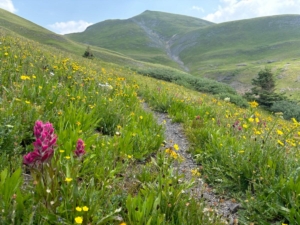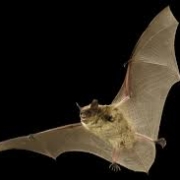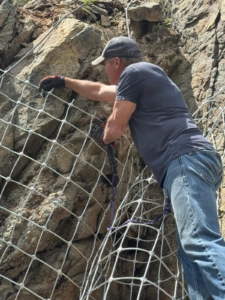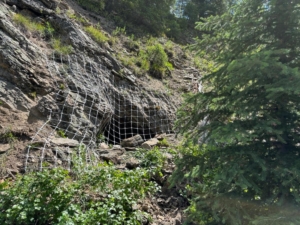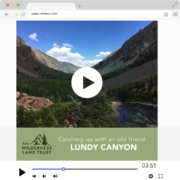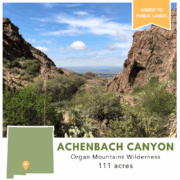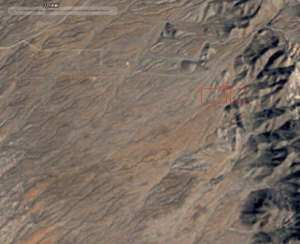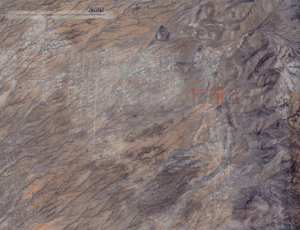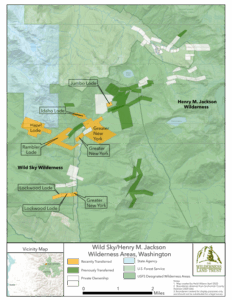Private inholdings protected in Maroon Bells-Snowmass and Weminuche Wilderness Areas, a win for recreationists
December 3, 2025-
The Wilderness Land Trust has recently protected three private properties within Colorado wilderness: the 20-acre Busher Claim in the Maroon Bells-Snowmass Wilderness, the 30-acre Needle Creek property, and the 31-acre Great Western Lode in the Weminuche Wilderness
The properties were previously privately owned, and at risk of development. Nationwide there are over 275,000 acres of private property, known as inholdings, within designated wilderness areas. Unlike the surrounding wilderness, they are not protected and can be developed with homes, resorts, timber, and mining operations. The Wilderness Land Trust works with willing sellers to purchase these properties and protect them to benefit public access, wildlife habitat, and healthy watersheds.
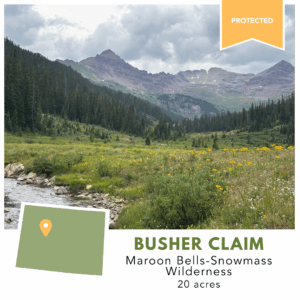 The Busher Claim, which the Trust recently purchased, sits on the slopes above the popular hiking destination of Cumberland Basin, below Pearl Mountain and Castle Peak. Its fragile high alpine ecosystem provides important wildlife habitat as well as pristine viewsheds for recreationists. Because it is located near the Pearl Pass Road, an OHV route from Aspen to Crested Butte, the property was at a higher risk of development. It has now been protected from development thanks to the generous support of Kim Kanas of Longmont, Colorado. With the acquisition complete, the Trust will now work to transfer the property to public ownership.
The Busher Claim, which the Trust recently purchased, sits on the slopes above the popular hiking destination of Cumberland Basin, below Pearl Mountain and Castle Peak. Its fragile high alpine ecosystem provides important wildlife habitat as well as pristine viewsheds for recreationists. Because it is located near the Pearl Pass Road, an OHV route from Aspen to Crested Butte, the property was at a higher risk of development. It has now been protected from development thanks to the generous support of Kim Kanas of Longmont, Colorado. With the acquisition complete, the Trust will now work to transfer the property to public ownership.
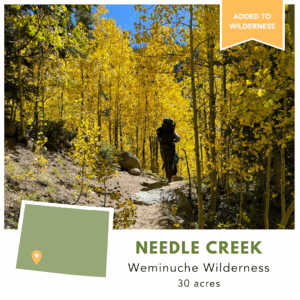 The Needle Creek property was acquired by the Trust earlier in 2025, and has now been transferred to public ownership and added to the Weminuche Wilderness. Running through the property are both Needle Creek and the Needle Creek Trail, which is used by hikers and climbers to access the very popular Chicago Basin and its surrounding 14,000+ peaks. With flat, buildable stream-side sites, the property was previously at risk of development. Now protected, public access on the trail to Chicago Basin has been ensured for future generations to enjoy. Needle Creek is an important tributary to the Animas River. This water source, along with vibrant aspen groves that stretch from the creek up the slopes of the Needle Mountains, create habitat for a wide range of wildlife. The Needle Creek property scores high for climate change resilience, biodiversity, and landscape connectivity, all important conservation values that will be protected as wilderness.
The Needle Creek property was acquired by the Trust earlier in 2025, and has now been transferred to public ownership and added to the Weminuche Wilderness. Running through the property are both Needle Creek and the Needle Creek Trail, which is used by hikers and climbers to access the very popular Chicago Basin and its surrounding 14,000+ peaks. With flat, buildable stream-side sites, the property was previously at risk of development. Now protected, public access on the trail to Chicago Basin has been ensured for future generations to enjoy. Needle Creek is an important tributary to the Animas River. This water source, along with vibrant aspen groves that stretch from the creek up the slopes of the Needle Mountains, create habitat for a wide range of wildlife. The Needle Creek property scores high for climate change resilience, biodiversity, and landscape connectivity, all important conservation values that will be protected as wilderness.
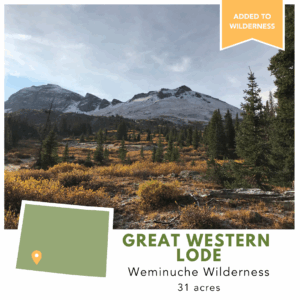 The Great Western Lode, which the Trust acquired in 2022, was also recently transferred to public ownership. Located about five miles north of the Needle Creek project in the Weminuche Wilderness, the property protects fragile alpine tundra habitat. Like the Needle Creek project, the addition of Great Western Lode to the wilderness area secures public access on a popular trail. The Whitehead Trail runs through the property and connects the Continental Divide Trail, a National Scenic Trail from Mexico to Canada, to the Highland Mary Trail and Deer Park Trails, which are easily accessible from the town of Silverton, Colorado, a year-round recreation destination. All but 6 acres of Great Western Lode have been added to wilderness area, with the remaining 6 acres, which extends outside of the established wilderness boundary, added to San Juan National Forest to be managed as wilderness.
The Great Western Lode, which the Trust acquired in 2022, was also recently transferred to public ownership. Located about five miles north of the Needle Creek project in the Weminuche Wilderness, the property protects fragile alpine tundra habitat. Like the Needle Creek project, the addition of Great Western Lode to the wilderness area secures public access on a popular trail. The Whitehead Trail runs through the property and connects the Continental Divide Trail, a National Scenic Trail from Mexico to Canada, to the Highland Mary Trail and Deer Park Trails, which are easily accessible from the town of Silverton, Colorado, a year-round recreation destination. All but 6 acres of Great Western Lode have been added to wilderness area, with the remaining 6 acres, which extends outside of the established wilderness boundary, added to San Juan National Forest to be managed as wilderness.
These properties will be protected as designated wilderness, which enjoys the highest level of protection available to public lands that can only be altered by an act of Congress, not executive orders or other administration directives.
To date, The Wilderness Land Trust has protected 198 properties in Colorado, totaling over 7,300 acres. The Trust’s work to protect Colorado’s most wild landscapes can be supported during Colorado Gives Day on December 9th at https://www.coloradogives.org/organization/Wildernesslandtrust, or anytime at www.wildernesslandtrust.org/get-involved/donate-now/
In the organization’s 33-year history, The Wilderness Land Trust has worked to keep the promise of wilderness by acquiring private land in and around wilderness from willing landowners and transferring them to public ownership. In this time, the Trust has purchased and transferred 616 properties totaling over 59,000 acres from Arizona to Alaska, completing 18 wilderness areas by removing their last remaining private inholdings. With each transfer, we come one step closer to completing the vision of the Wilderness Act.
